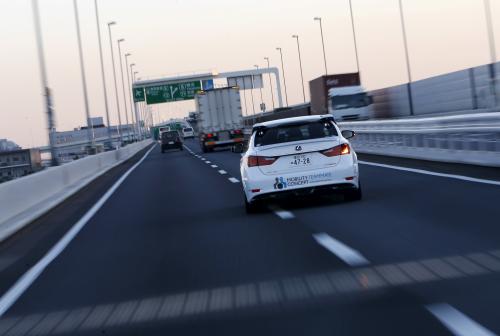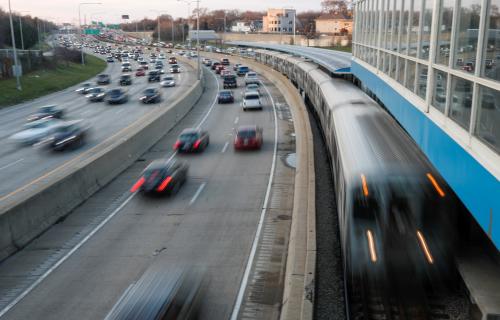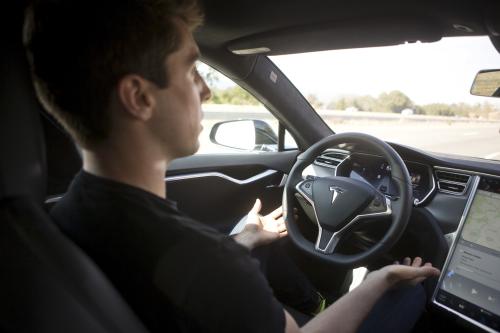Around the world, motor vehicle traffic exacts a large toll in lost productivity from time spent commuting, degraded air quality, and human lives lost to accidents. However, the magnitude of these losses creates an enormous opportunity for emerging technologies to improve the speed, safety, and comfort of transportation. A new paper from Darrell West of the Center for Technology Innovation and Yuming Ge, Xiaoman Liu, and Libo Tang of the China Academy of Information and Communication Technology examines these technologies and discusses their implications for the future of transportation. Enhanced safety features in vehicles, smart infrastructure, and wireless communication between vehicles and infrastructure promise to transform the movement of people and their quality of life.
Even when not moving, traffic consumes a staggering amount of time, money, and energy. In 2014, traffic delays cost Americans an additional three billion gallons of fuel and seven billion hours of extra travel time. Wasted time translates to wasted productivity: The Economist estimated that traffic congestion in the U.S., the UK, France, and Germany cost $200 billion in 2014. The situation is far worse in developing countries with growing car ownership and limited infrastructure. More vehicles cause more collisions and more wear on existing roadways, adding to the financial costs of traffic.
Increased traffic also worsens air quality in major cities, both because there are more cars on roads and they take more time to get to their destinations. While carbon dioxide emissions drive climate change on a global level, the smog they create in cities also causes immediate health risks. The OECD estimates that worldwide in 2015, air pollution resulted in 1.2 billion lost working days from illness and $21 billion in related healthcare costs. Autonomous vehicles would not only burn less fuel sitting in traffic, but by braking and accelerating more smoothly, they can also use less fuel than a human driver.
Perhaps the highest cost of traffic comes from fatal accidents. Last year, 35,000 people in the U.S. and another 260,000 in China died from injuries in car crashes, and many of these were avoidable. In the U.S., human error causes 94 percent of accidents; alcohol use and speeding account for a large fraction of these deaths. Semi-autonomous features like forward collision and lane departure warnings already available in cars can reduce some of the human causes of traffic accidents, while fully autonomous vehicles may reduce them even further.
Integrating technology into transportation infrastructure can reduce traffic congestion and its associated costs. Sensors embedded in roads can count vehicles in real time and communicate with traffic signals that adjust dynamically to match traffic volume. Sensor-laden autonomous vehicles will also communicate wirelessly with each other, to smart infrastructure, and to the wider internet of things to smooth traffic flow. The large volumes of data transmitted by these technologies will require the high bandwidth and low latency of fifth-generation (5G) wireless technology, as well as artificial intelligence that can analyze the data and anticipate future traffic risks for urban planners.
In the United States, fragmentation of regulatory responsibility for infrastructure and vehicle safety between states and the federal government will hamper the adoption of smart infrastructure and autonomous vehicles unless regulators can harmonize their requirements. China has taken a more systematic approach to transportation regulation, giving its manufactures an advantage. Considering the potential benefits to productivity, air quality, and public safety, policymakers must prepare for the widespread use of smart transportation technology.
Read the new paper, “Smart transportation in China and the United States”, here.
The Brookings Institution is committed to quality, independence, and impact.
We are supported by a diverse array of funders. In line with our values and policies, each Brookings publication represents the sole views of its author(s).








Commentary
Smart transportation technology promises to lower the costs of traffic
December 14, 2017